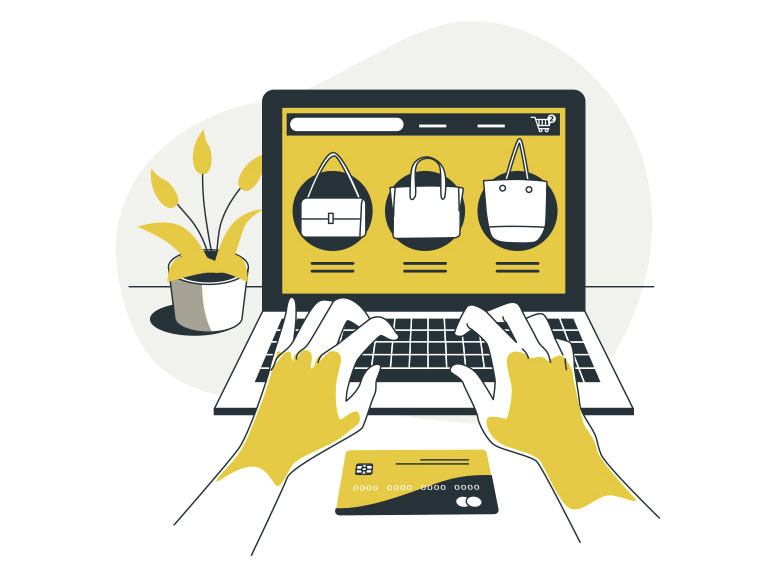Social Commerce – Kiya kare kiya na kare yeah kaissi mushkil Hai!

Research has shown that making shopping decisions can help reinforce a sense of personal control. It can also ease feelings of sadness. In addition, just browsing, scrolling or window shopping (but not buying something) can also be positively impacting your mood. Retail therapy is thus proven to be good for overall health and wellbeing. And today this therapy can be experienced at the tip of your fingers.
So Ladies & Gentlemen, a no brainer all of us love shopping
As we say, there are two sides of the same coin, so sometimes it may also prove to be a disaster. So while we do love shopping online, there are plenty of times when we are left confused, unhappy and sometimes angry.
So fikar not, we have now heard of Social Commerce and I know how exactly you feel about this term social business.
Let’s go a little back in our times
{(Yaasss I am that old ;)} 😜
We enjoyed our Shopping offline. It used to be a day full of experiences, right from discovering new eating joints to buying apparel, accessories, home appliances etc etc etc ‘What an experience!’ You’ll never go alone and will either ask your friends or family to tag along as you need their opinion on products you would like to buy.
Also ecommerce started over 40 years ago, the introduction of early technology like Electronic Data Interchange (EDI) and teleshopping in the 1970s paved the way for the modern-day ecommerce store as we know it today. Online shopping became possible when the internet was opened to the public in 1991. Amazon was one of the first ecommerce sites in the US to start selling products online and thousands of businesses have followed since.
And Today, the brick-and-mortar experience is the bread and butter of the retail world. But, not everyone likes sandwiches these days. Especially younger generations who have emerged as gluten-free online shoppers. They seem to prefer to keep things digital. A click of the mouse, a tap of the button, a new window here, an OTP there – easy does it. The driving factor has not merely been a matter of convenience. The probability of better prices and the availability of choice throughout the purchasing cycle have played important roles too.
And now we hear about Social commerce!
In simple words ‘The process of selling products directly on social media platforms’

But is it that simple?
I feel Social Commerce is here to stay, and the conversions will surely keep increasing. The news reports are tracking the number of US social commerce buyers to accelerate 25.2% to 80.1 million in 2020 and will grow another 12.9% to 90.4 million in 2021. And so is the case in India as well!
India’s social commerce market, pegged at $800 million, is largely driven by social media platforms such as Instagram, Facebook, WhatsApp, Trell, and Chingari. These platforms dominate 65% of the social commerce market in India, the rest lies with e-commerce led platforms such as Meesho, GlowRoad, Dealshare, Shop101, according to a recent report by consulting firm Wazir Advisors. Reports suggest that Meesho is to social commerce what Flipkart was to ecommerce in late-2000s India.
D2C is the trigger – Another key factor adding to the growth of social commerce is the increasing number of brands going Direct-to-consumer. Earlier only large brands used to set up their online store, however, that trend has changed, with small retailers setting up their web stores and taking orders.
Facebook Shops was initially released to help small businesses navigate distressed sales during the COVID-19 pandemic. These small retailers are leveraging social platforms such as Facebook, WhatsApp, Instagram and more to market their products, and giving customers a chance to interact with a brand before making the purchase. Social commerce offers a great platform to D2C brands to have real-time feedback and adapt to changing consumer needs.
In the last few months, the homegrown social commerce players have been able to establish their niche, especially in Tier II and Tier III cities.
The Key SMEs are leveraging social commerce to expand in India and worldwide and focusing on creating new business opportunities.
For example, in 2020, Jaipur-based Ms. Ritu Bhansali, Founder, Everything Mom Made, started her skin care brand on Instagram and the company acquired 2,300 followers in less than five months. Besides supplying bulk orders for weddings, and catering to a host of organisations, the company ships ~80 individual packages each month.
According to Ms. Kriti Tula, Creative Director and Co-owner, DOODLAGE (a fashion brand), with the help of social media sites such as Facebook and Instagram, DOODLAGE grew 3x compared with the pre-COVID levels and expanded footprint to markets including Australia, Dubai, Singapore and Europe.
Evolving business models such as reselling and group buying. In addition to social media-led product discovery, business models such as reselling and group buying have also evolved in this space. Case in point Meesho, India-based social commerce platform, follows a reselling model, wherein suppliers list their product catalogue on the app and individual entrepreneurs/businesses connect with them via Facebook and WhatsApp for relevant purchases. In India, >50,000 suppliers and 8 million entrepreneurs run and manage their businesses using Meesho.
Talking about Big Brands Globally, There’s no shortage of social strategies and platforms for brands to leverage to stay relevant. From the worlds of fashion and food to marketing and tech, there is no “default” approach to effective social commerce.
Here are a few awesome examples of top brands staking their claim via social commerce.

Burberry – Seeing is believing:
Just as shoppers are making the bulk of their purchases via Facebook, they’re also consuming more video than ever on the platform. The takeaway here isn’t to solely confine yourself to video. Although video is often associated with educational and how-to content, luxury brands such as Burberry use bite-sized videos and Facebook Live to bring their products to life.

Au Revoir Cinderella:
‘Don’t under-estimate the power of a common man’ . Yass The importance of UGC for social commerce can’t be overstated. Brands such as Au Revoir Cinderella let their products speak for themselves versus trying to scream “buy me” at their followers.

Always Remember:
shopping represents a conversation. And what are these conversations? Important for brands to keep their eyes & ears open to any feedback be it positive or negative! Hence today all Marketplaces as well brands give a lot of importance to reviews!

What we are also seeing today’s shoppers certainly aren’t afraid to spend,
brands should do everything they can to build trust with their followers. Social proof is an incredibly valuable marketing tool for any brand. Dollar Shave Club has a Pinterest board dedicated to positive customer feedback and unboxing photos.

How AI chatbots are shaping the future of social commerce.
‘Give first Take later’ Very recently I saw a case study on how brands are facilitating this technology for the end consumers & this not just acts as a convenience but also aids in faster purchase & optimise the costs per lead .
Conclusion

Effective social commerce is a combination of smart strategies versus a single, blanket approach. To put it in a Corporate / sophisticated way, but at the end of the day, It’s Pure Business & for it to perform in today’s day & age it has to be Personal.
And one of the most important rule which holds true in Virtual world as well ‘Jo Dikhta hai wohi bikta hai’ creating these personalised experiences will only help grow brands and come closer to their audiences, we always have our favorite places where we want to go and do shopping then be it Mumbai linking Road, Fashion Street to Delhi’s Sarojini market, Janpath, Dili Haat, etc because these give us those special moments & experience which made us take that effort not to just travel but also in that heavily crowded place we found our best pick!
And likewise in this Virtual world where we have absolutely no boundaries for shopping areas all we have to do is improve our interaction & experience with our end users. As for them switching from brands or platforms like facebook to Insta to Youtube will be just at a click of a button!
